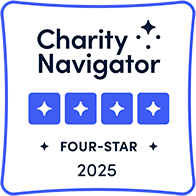New Curriculum Uses Personal Stories to Teach Immigration
![[ai] A collage of diverse individuals featured in an educational resource titled 'Teaching Immigration with the Immigrant Stories Project.' The layout includes images of various people and educational logos. [ai] A collage of diverse individuals featured in an educational resource titled 'Teaching Immigration with the Immigrant Stories Project.' The layout includes images of various people and educational logos.](/Res/875/ihrc-lessons.jpeg)
Spurred by the current public rhetoric around immigration, teachers have been reaching out to The Advocates for Human Rights for resources that help their students understand how and why people immigrate to the United States and what they experience once they arrive. The Immigration History Research Center (IHRC) collects personal narratives by contemporary immigrants and refugees that can answer those questions. Working together, The Advocates and the IHRC have created a series of lessons, Teaching Immigration with the Immigrant Stories Project. This free curriculum for grades 8 to adult learners helps students learn about U.S. immigration through immigrants’ personal stories.
Storytelling is at the center of Teaching Immigration. Each unit features several digital stories from the IHRC’s Immigrant Stories Project. Immigrant Stories trains participants to create 3-5 minute original videos about a personal or family immigration experience. Students study these stories within the contexts of the U.S. immigration system, U.S. immigration history, and global migration conditions. For example, while learning about the refugee resettlement system, students watch videos by several refugees explaining their experiences navigating this bureaucracy from refugee camps to new schools in the U.S.
The curriculum includes three units. Each unit contains several lessons, and Units One and Two include optional activities. Teachers may choose any combination of lessons.
“Unit One: Understanding Immigration” introduces students to the many reasons and ways that individuals and families migrate. Students study the global conditions that affect migration and examine individuals’ stories to understand how people make decisions in response to these conditions.
“Unit Two: Refugees and Asylum Seekers” introduces students to the U.S. refugee and asylum systems. Students study these systems through a human rights perspective and compare the experiences of individual refugees and asylum seekers who have come to the U.S. since World War II.
“Unit Three: Youth, Identity, and Immigration” focuses on the experiences of immigrant youth and immigrants’ children. The unit’s themes include identity, culture, belonging, discrimination, and heritage.
Teaching Immigration builds on the third edition of The Advocates’ Energy of a Nation curriculum. It includes lesson plans, classroom activities, worksheets, background summaries, and up-to-date fact sheets. Teachers may also download PowerPoints explaining complex aspects of the U.S. immigration system. The curriculum is applicable to a variety of subjects, including social studies, history, geography, English, media studies, and literature.
The Advocates and the IHRC believe that personal stories are a powerful tool for developing empathy and understanding how national and global conditions affect individuals and families. Teaching Immigration helps teachers meet academic standards while enriching their lessons with personal immigration narratives. By teaching students to connect these stories to a deeper understanding of contemporary immigration, The Advocates and IHRC hope to provide students with the perspectives to combat xenophobia and transform future immigration debates. Download the free curriculum at http://www.theadvocatesforhumanrights.org/teachingimmigration.html.
By Elizabeth Venditto, Immigrant Stories Project Manager, Immigration History Research Center
The Teaching Immigration curriculum is supported by the University of Minnesota College of Liberal Arts’ Joan Aldous Innovation Fund.



